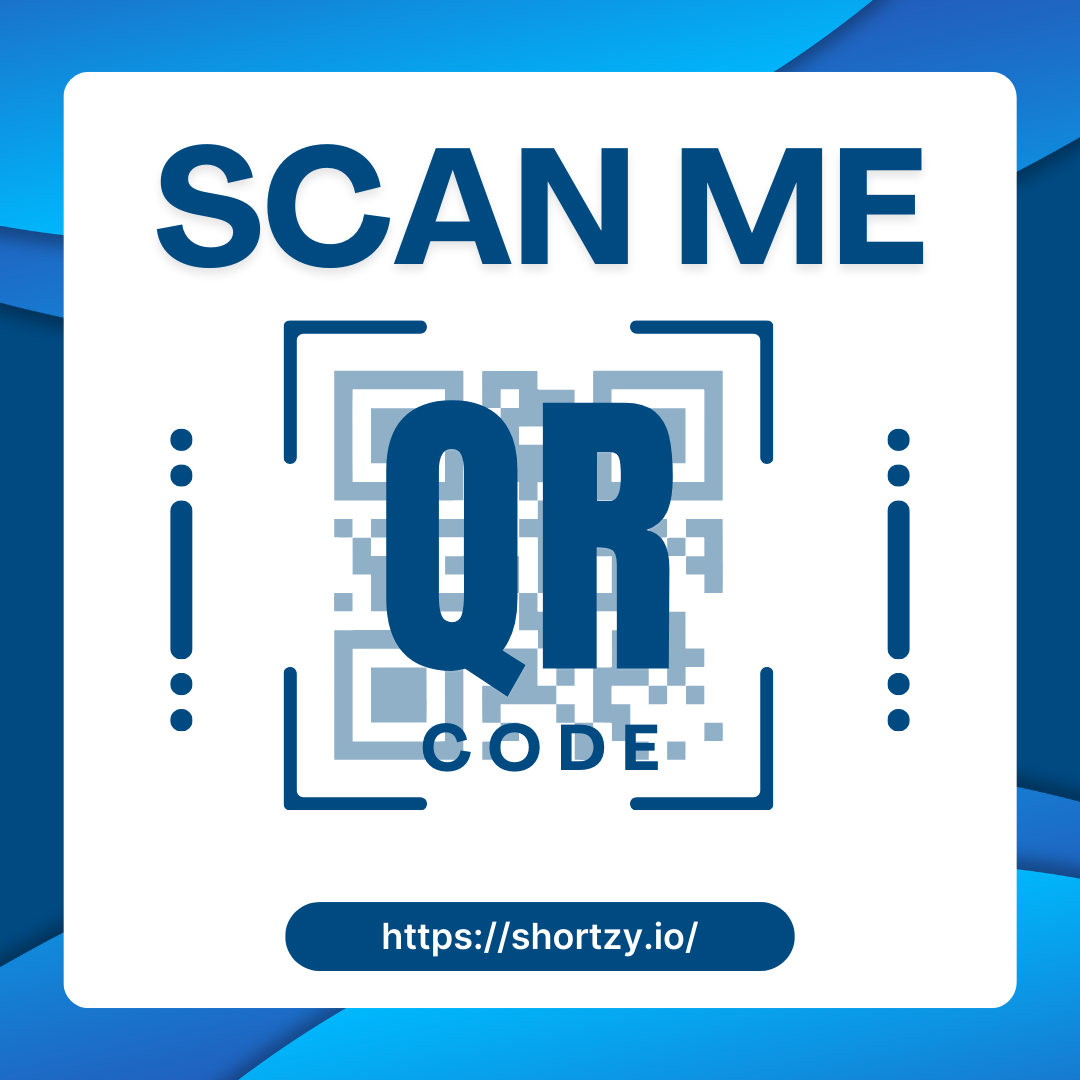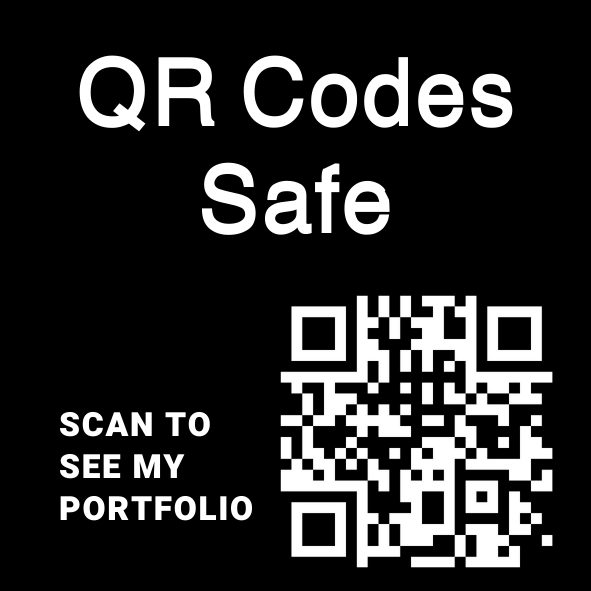
Why is QR Code Called QR?
QR stands for "Quick Response"! This name aptly reflects two key features of the QR code:
1. Fast Scanning and Access: QR codes were designed to be scanned and decoded quickly by scanners or smartphone cameras. Unlike traditional barcodes that only store limited data, QR codes can hold significantly more information, allowing for faster extraction and processing of the encoded data. This faster reading speed helps in applications like inventory management, product authentication, and contactless payments.
2. Rapid Access to Information: When scanned, a QR code typically directs the user to a specific piece of information, such as a website, contact details, or a download link. This immediate access to relevant information provides a quick and convenient experience for users.
The name "QR" therefore accurately captures the essence of this technology – its ability to be scanned and interpreted quickly, providing users with instant access to the encoded information.
The Invention of QR Codes
Originating in the automotive industry in Japan during the 1990s, QR codes were initially developed by Denso Wave, a subsidiary of Toyota. The intent was to track automotive parts efficiently. However, their application soon transcended their initial purpose, leading to the need for an appropriate name.
The early 1990s marked a period of technological innovation, and Denso Wave's introduction of QR codes for tracking automotive parts proved to be a groundbreaking development. The efficiency and versatility of QR codes quickly caught the attention of industries beyond automotive manufacturing.
What Does "QR" Stand For?
The acronym "QR" stands for "Quick Response," emphasizing the swift access to information that these codes provide. Let's delve deeper into the unraveling of this acronym and gain insights into the naming process.
Delving into the Origins: The Birth of "Quick Response"
The term "Quick Response" perfectly encapsulates the primary function of QR codes—swiftly providing access to information. Denso Wave, recognizing the speed and efficiency of their invention, aptly named these codes to highlight their quick response capabilities.
Understanding the Naming Process: A Glimpse Behind the Scenes
The naming process involved a meticulous consideration of the technology's essence. Engineers and developers aimed to encapsulate the essence of rapid data retrieval within a succinct and memorable term. The result was the simple yet powerful acronym "QR."
QR Codes vs. Barcodes
Distinguishing themselves from traditional barcodes, QR codes boast key differences and offer distinct advantages. Their capacity to store information both horizontally and vertically enhances versatility, making them indispensable for various applications.
A Comparative Analysis: QR Codes vs. Barcodes
Traditional barcodes, characterized by vertical lines of varying thickness, have limitations in terms of data storage capacity. QR codes, on the other hand, present a matrix of black squares on a white background, allowing for the storage of information both horizontally and vertically. This fundamental difference provides QR codes with a significant advantage in terms of versatility.
Advantages Galore: The Unique Traits of QR Codes
QR codes, with their ability to store a myriad of information types, from simple text to URLs and multimedia, quickly became the preferred choice for businesses and industries seeking efficient and dynamic data encoding.
The Technology Behind QR Codes
QR codes encode information using a matrix of black squares on a white background. Understanding the encoding process and the structure of QR codes sheds light on their functionality.
Decoding the Matrix: The Intricacies of QR Code Encoding
The encoding process involves representing data in binary code, with each black square in the QR code matrix representing a specific binary sequence. This matrix structure allows for the efficient storage and retrieval of diverse types of information.
Ubiquity of QR Codes
From product labels to marketing materials, QR codes have found applications across diverse industries. Explore their ubiquity and their role in modern marketing strategies.
Versatility Unleashed: QR Codes in Various Industries
The adaptability of QR codes has led to their widespread integration across diverse sectors. Industries, ranging from retail and healthcare to logistics and education, have harnessed the power of QR codes for purposes such as inventory management, marketing, and information dissemination.
Marketing Magic: QR Codes in Modern Marketing Strategies
Modern marketing has witnessed a paradigm shift with the incorporation of QR codes. These codes serve as interactive gateways, enabling consumers to access additional information, promotional offers, and multimedia content with a simple scan. The ease of use and instant accessibility make QR codes a valuable tool for marketers seeking to engage and captivate their audience.
QR Codes and Accessibility
QR codes contribute to inclusivity by providing convenient access to information for individuals with visual impairments. Discover how they enhance the overall user experience.
A Vision for All: QR Codes and Inclusivity
The structure of QR codes, with its high-contrast black and white pattern, facilitates accessibility for individuals with visual impairments. Specialized apps and features on smartphones empower users to interpret and interact with QR codes effortlessly, enhancing inclusivity in the digital realm.
Enhanced Experience: Navigating the World with QR Codes
The convenience of scanning QR codes using smartphones has transformed the way individuals access information. From menu scanning at restaurants to museum exhibits, QR codes have become interactive guides, enriching the overall user experience.
The Popularity Surge
The adoption of smartphones has played a pivotal role in the widespread popularity of QR codes. Uncover the factors contributing to their adoption and explore real-world examples of QR code applications.
Smartphones at the Helm: Fueling the QR Code Revolution
The surge in smartphone usage, coupled with the integration of QR code scanners into camera applications, has democratized access to QR code technology. Users no longer require specialized scanners, as the technology is readily available on the device they carry daily.
Factors Driving Adoption: Why QR Codes Became a Global Phenomenon
The simplicity and speed of QR code scanning, combined with their versatility, contributed to their rapid adoption. Businesses, recognizing the potential for seamless interaction, began incorporating QR codes into their operations, leading to a snowball effect in their global popularity.
Real-world Examples: QR Codes in Action
Explore the real-world applications of QR codes, from contactless payments and ticketing to interactive museum exhibits. These examples showcase the diverse and transformative impact of QR codes on various aspects of daily life.
QR Codes in a Digital World
As smartphones became ubiquitous, QR codes transitioned from specialized scanners to integrated features in camera apps. This evolution simplified the scanning process, making QR codes more accessible to a broader audience.
The Smartphone Revolution: QR Codes Go Mainstream
The integration of QR code scanning functionality directly into smartphone cameras marked a pivotal moment in their evolution. Users no longer needed separate apps or devices to interact with QR codes, making them an integral part of the digital experience.
Scanning Mechanisms and Apps: Navigating the QR Code Landscape
Understanding the nuances of QR code scanning mechanisms on different devices provides insights into the user experience. From iOS to Android, the variations in scanning apps contribute to the seamless integration of QR codes into the digital landscape.
QR Codes and Data Security
While QR codes offer convenience, it's crucial to address potential security risks. Learn about the best practices for secure QR code usage and how to mitigate potential risks.
Navigating the Security Landscape: Risks and Mitigation
As with any technology, QR codes come with their share of security considerations. Users and businesses must be aware of potential risks, including malicious QR codes leading to phishing websites or malware downloads. Implementing best practices, such as avoiding scanning codes from unknown sources and regularly updating scanning apps, mitigates these risks.
Best Practices for Secure Usage: Safeguarding the QR Code Experience
Educating users on secure QR code practices ensures a safe and enjoyable experience. From verifying the source before scanning to using reputable scanning apps, adopting these best practices minimizes the potential for security breaches.
QR Codes in the Pandemic Era
The COVID-19 pandemic accelerated the adoption of contactless technologies, further elevating the role of QR codes. Explore their impact on contactless interactions and their role in health and safety measures.
A Catalyst for Change: QR Codes in the Pandemic Landscape
The global pandemic reshaped daily life, with a heightened focus on minimizing physical interactions. QR codes emerged as a key player in facilitating contactless transactions, interactions, and information dissemination, contributing to the collective effort to curb the spread of the virus.
Contactless Interactions: QR Codes Redefining Social Norms
From contactless payments at grocery stores to virtual menus in restaurants, QR codes became synonymous with safe and efficient interactions. Their role in minimizing physical touchpoints contributed to a sense of security and reassurance during uncertain times.
QR Codes and Global Impact
Beyond geographical boundaries, QR codes have influenced international business practices. Gain insights into their impact and understand cultural perspectives on QR codes.
Global Integration: QR Codes Breaking Borders
The universal applicability of QR codes has transcended geographical and cultural barriers. Explore how businesses worldwide have adopted QR codes as a standard practice, and understand the cultural nuances that shape their usage in different regions.
Cultural Perspectives: QR Codes in the Eyes of the World
While QR codes offer a universal language of information access, cultural perspectives influence their reception and application. Delve into case studies that highlight how QR codes are embraced and adapted in diverse cultural contexts.
The Evolution of QR Code Design
Moving beyond functionality, explore the aesthetic considerations and customization options that businesses can leverage to integrate QR codes seamlessly into their branding.
Aesthetic Appeal: The Artistry of QR Code Design
As QR codes became ubiquitous, the need for aesthetic considerations gained prominence. Businesses and designers began exploring customization options, including color choices, logos, and even artistic renditions, to align QR codes with brand identities and enhance visual appeal.
Customization Options: Tailoring QR Codes to Brand Aesthetics
The evolution of QR code design extends beyond functionality. Explore how businesses can customize QR codes to align with their brand aesthetics, creating a visual language that resonates with consumers.
Conclusion
Summarize the significance of QR codes in our interconnected world. Reflect on their lasting impact on technology and communication, marking the transition from automotive tracking tools to ubiquitous digital connectors.
In the world of QR codes, the journey from inception to global adoption is nothing short of extraordinary. Their ability to bridge the physical and digital realms has made them an integral part of our modern lifestyle.
FAQs:
How do QR codes work?
QR codes encode information using a matrix of black squares, with each square representing binary code.
Are QR codes secure?
While QR codes offer convenience, users should exercise caution and avoid scanning codes from unknown sources.
What is the history of QR codes?
QR codes were first developed by Denso Wave, a subsidiary of Toyota, in the 1990s for tracking automotive parts.
Can QR codes be customized?
Yes, businesses can customize QR codes with different colors and designs to align with their branding.
What is the future of QR code technology?
The future holds innovations such as dynamic QR codes, enhanced design options, and augmented reality integration.
.png)

